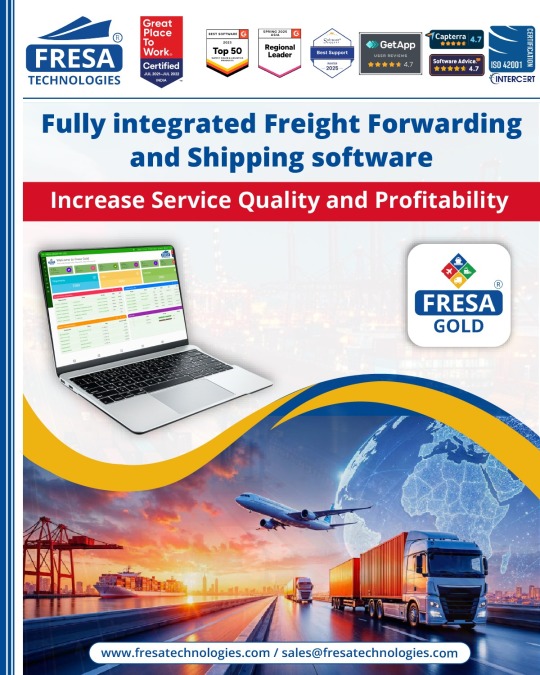#Profitability
Explore tagged Tumblr posts
Text
How can you improve customer satisfaction and also boost revenue using AI-powered CSAT?

Customer satisfaction (CSAT) goes beyond being just a survey result. In competitive markets it plays a crucial role in driving repeat business, reducing churn and supporting revenue growth. However, many companies still view CSAT as merely a feedback metric rather than a strategic tool for enhancing profitability. Today, AI-powered CSAT platforms are changing that perspective by turning customer sentiment into clear financial outcomes.
Why CSAT needs more than surveys
Traditional CSAT programs rely on manual surveys and small samples. This captures only a limited view of the customer experience. As a result, businesses miss out on crucial insights that could fix problems, increase loyalty, or unlock upsell opportunities.
Bain & Company found that improving client retention by just 5% can lift profits by 25% to 95%. High CSAT scores are closely linked to repeat purchases and lower churn. Businesses that treat CSAT as a real-time, data-driven initiative can see these benefits directly in their bottom line.
How AI-powered CSAT improves satisfaction and revenue at the same time
AI-driven CSAT tools go far beyond traditional surveys. They combine speech and text analytics, machine learning, and automated monitoring. This gives organizations a full picture of customer sentiment and delivers benefits that impact both customer experience and revenue.
1. Captures every customer interaction for full visibility
AI CSAT platforms automatically review all calls, chats, and emails. This means businesses see the entire customer landscape, not just a sample. By spotting negative trends early, companies can resolve issues before they lead to lost business.
2. Enables sharper coaching and better processes
When AI finds patterns of dissatisfaction tied to specific teams or workflows, managers get clear signals on where to improve. This makes coaching more focused and effective, raising service quality across the board.
3. Opens the door to more sales
High CSAT scores show which customers trust the brand. AI tools identify these groups and highlight buying signals, helping teams pitch the right offers at the right time. Harvard Business Review research shows that emotionally connected customers are over twice as valuable—they buy more and become brand promoters.
4. Strengthens compliance and reduces operational risks
AI CSAT systems automatically check conversations for compliance and quality issues. This lowers the chance of regulatory fines and protects the brand’s reputation, shielding future revenue.
5. Links satisfaction directly to future revenue forecasts
By tying CSAT scores to customer buying patterns, AI gives leaders a forward view of revenue. This helps plan budgets and target growth efforts toward the most promising customer segments.
The clear business impact: stronger satisfaction and higher profits
Companies using AI-driven CSAT aren’t just reacting to problems—they’re building a system that steadily improves customer experiences and drives growth. This approach cuts churn, increases lifetime value and makes operations more efficient.
For instance, Vanie CSAT uses advanced AI to analyze customer sentiment across every channel. This gives businesses the insights needed to boost satisfaction and grow revenue. With platforms like Vanie CSAT, customer satisfaction becomes a managed process that consistently adds to profitability.
#CustomerSatisfaction#CSAT#CustomerExperience#AIinCX#CustomerRetention#ReduceChurn#RevenueGrowth#VoiceOfCustomer#AIAnalytics#CustomerInsights#Loyalty#BusinessGrowth#CustomerFeedback#AI#Profitability#ClientSuccess#DataDrivenCX#CustomerEngagement#CustomerCentric#VanieCSAT#SpeechAnalytics#TextAnalytics#CustomerSentiment#CXStrategy#CustomerJourney#OperationalExcellence
2 notes
·
View notes
Text
As a global mode of production based on class domination, capitalism depends on the extraction of surplus value from a subordinated class, the world working class, which is the pool from which profits, interest, rent, dividends, and other forms of this surplus are taken. As one of its most basic features, corporations in different countries mechanize their operations to raise their profit rate by increasing labor productivity. As these techniques become generalized, the relative advantage for their early adopters dries up, and a new productivity norm becomes the rate at which businesses must produce to remain competitive. The drive for a new breakthrough in productivity begins. Enormous amounts of profit are produced and realized during this process while deleting workers from it—that is, by getting rid of the real source of profit, labor power. As a result, even as individual corporations rake in more money through investing in machinery, the average rate of profit for all producers declines. The longer this goes on, the lower profitability becomes, reducing the level of investment and further intensifying the pressures of competition.
Jamie Merchant, The Economic Consequences of Neo-Keynesianism
45 notes
·
View notes
Text

Today's Daily Scripture Pic: Exert Effort Proverbs 14:23 – “All hard work brings a profit, but mere talk leads only to poverty.”
#scripture#daily scripture#bible verse#daily bible verse#hard work#profitability#results#talk#all talk#laziness#poor#poverty
2 notes
·
View notes
Text
Chipotle says ensuring 'consistent and generous portions' has taken a toll on its profitability
https://www.businessinsider.com/chipotle-says-ensuring-consistent-portions-has-hit-profitability-2024-10
#chipotle#profitability#profits#class war#hospitality#foodserviceparts#foodstagram#food stim#foodsafety#foods#foodie#foodporn#food photography#foodpics#food#ausgov#politas#auspol#tasgov#taspol#australia#fuck neoliberals#neoliberal capitalism#anthony albanese#albanese government#extortion#exploitation#exploitative#eat the rich#eat the fucking rich
3 notes
·
View notes
Text

(re)vive
#(re)vive#returns#revenue#sustainability#profitability#fashion#deadstock#typography#type#typeface#font#Suisse Intl#PP Editorial New#2024#Week 30#website#web design#inspire#inspiration#happywebdesign
4 notes
·
View notes
Text
Understanding Amazon Fees and Their Impact on Profitability

Selling on Amazon offers immense opportunities, but it also comes with a complex structure of fees that can significantly impact your bottom line. Understanding these fees is crucial for maintaining profitability, especially for Fulfillment by Amazon (FBA) sellers. If you’re not factoring in the full cost of doing business on Amazon, you could be overestimating your profits or, worse, operating at a loss without even realizing it.
Types of Amazon Fees
There are several key categories of fees that every Amazon seller should be aware of. The first is the referral fee, which Amazon charges for every item sold. This fee varies by category but generally ranges from 8% to 15% of the item’s sale price. For example, electronics might have a lower referral fee, while categories like jewelry and clothing can be on the higher end.
Next, FBA sellers must account for fulfillment fees. These fees cover the cost of storing, picking, packing, and shipping products from Amazon’s warehouses. The amount charged depends on the product's size and weight. In addition, Amazon charges monthly storage fees based on the amount of inventory stored in their fulfillment centers, with higher rates during peak seasons such as Q4.
Other potential charges include long-term storage fees, returns processing fees, and unplanned service fees if your inventory doesn’t meet Amazon’s standards. While these fees may seem small individually, they can add up quickly, especially for sellers managing a high volume of products.
The Impact on Profit Margins
All these fees directly affect your profit margins. Sellers often price products based on competitive market rates without fully accounting for these deductions. As a result, an item that appears profitable on the surface may yield very slim margins after Amazon takes its share.
For example, a $30 product with a 15% referral fee ($4.50), a $4 FBA fee, and a $1.50 storage cost will leave the seller with $20 before deducting the cost of goods sold (COGS), advertising, and other business expenses. After accounting for all costs, your actual profit could be only a few dollars—or even negative if costs rise unexpectedly.
Why Fee Monitoring Matters
Consistently monitoring and reviewing your Amazon fees helps you identify profit drains and make smarter pricing or inventory decisions. For instance, if a product is incurring high storage fees due to slow turnover, it may be time to lower the price or run a promotion to move inventory. Understanding the real cost of returns, which includes not just refunds but also return processing fees and lost inventory value, can also help you revise your return policies or improve product listings.
Get Professional Help from an Amazon Seller Accountant
Navigating these fees and optimizing profitability can be overwhelming, especially as your business scales. An experienced Amazon seller accountant can provide essential support by breaking down fee structures, categorizing costs properly, and helping you analyze margins per SKU. They can also guide you in setting up accounting systems that track fees accurately and help you avoid common financial pitfalls.
Conclusion
Amazon’s fee structure plays a major role in your profitability. By understanding each type of fee and how it affects your margins, you can make more strategic decisions about pricing, inventory, and operations. With the support of a knowledgeable Amazon seller accountant, you’ll be better positioned to build a profitable, sustainable business in today’s competitive eCommerce landscape.
1 note
·
View note
Text
Success and Failure in Forex Trading
Forex trading, or foreign exchange trading, is a challenging yet potentially rewarding endeavor. Traders enter the market with hopes of achieving financial success, but the path is often fraught with both triumphs and setbacks. Understanding the factors that contribute to success and failure in forex trading is crucial for any trader aiming to navigate this volatile market…
#Forex#Forex Market#Forex Traders#Forex Trading#Leverage#Market Trends#Overtrading#Profitability#Risk Management#Stop-Loss#Technical Analysis#Trading Decisions#Trading Plan#Trading Strategies
3 notes
·
View notes
Text
Marketing Abaca Fiber: Insights from Caraga Region Farmers

Abstract
The study was conducted to determine the marketing practices and the profitability of establishing Abaca in the Caraga Region. A total of One Thousand Two Hundred Fifty-Six (1256) farmers, Seventy-Seven (77) traders, and three (3) processors were interviewed as the respondents of the study. Their names were obtained from the Philippine Fiber Development Authority (PhilFIDA) and the Municipal Agriculture Office (MAO) of the concerned municipalities of the Region. Data gathering activities included interviews and focus group discussions (FGDs), and stakeholder forums were conducted to validate and gather additional information. The said Focus Group Discussion and Stakeholders’ Forum were attended by the farmers, officers in various cooperatives, traders, representatives from the regional line offices, the Department of Trade and Industry (DTI), Department of Agriculture (DA), Department of Agrarian Reform (DAR) Municipal Agriculture Offices (MAO), Academe, Provincial Agriculture Officer. In the Caraga Region, abaca traders are situated in Agusan del Norte 28 or 36.36%, Agusan del Sur 25 or 32.47%, Surigao del Sur 24 or 31.17% and no traders in the province of Surigao del Norte. The one who sets the price for abaca fiber is the trader/buyer 99.28 % and only 0.71% sets by the farmer. The means of contacting buyers are referrals by the farmers 32.96%; traders will come to the farmers 27.46%, recommended by the Local Government Unit (LGU) 23.88%, and traders who are known by the cooperatives 15.68%. The buyers’ requirements in buying abaca fibers are quality 63.69% and volume 36.30%. Traders engage in buying Abaca for more than 15 years or 38.5%; 1-5 years, 30.12%; 11-15 years, 18.07% and 6-10 years, 13.25%. The means of transporting abaca fiber is through motorcycles 43.37% and hired trucks 56.61%. The estimated monthly volume sold is 1- 5 metric tons or 92.77% and 6 – 10 metric tons. The farmer’s Abaca fibers through Barangay or Municipal Traders, Cooperatives/Consolidators, Baling and Grading Establishment, Processors, and exporters. The issues and concerns for the traders are the following: classification and grading of fiber, cheating abaca bundles where stones inserted to increase weights, abaca fiber not adequately dried, and piles of Abaca are mixed with other fibers. The profitability of abaca farming for 1 hectare /year is the average of P48,000 for a typical farm, while for a good farm is P115,200 – 192,000.

Introduction
The "Manila hemp," known internationally for its world-class fiber, continues to be one of the priority agricultural commodities of the Department of Agriculture (DA). The Philippines supplies more than 87.4 percent of the total abaca fiber market and earns more than $111.33 million in global abaca trade annually (PCA, 2017).
In 2022, as per PhilFIDA data, Caraga ranked third among the top abaca-producing regions in the country with an estimated 10,000 metric tons (MT) of fiber production, next to Bicol Region (1st) and Davao Region (2nd).
Abaca is in great demand in the world market today because of its lucrative value in industries such as making security papers, paper money, ropes, insulators, and other handicrafts. The most important part of the Abaca is the stalk which is the source of the fiber. Abaca fiber is superior to all other natural fibers because of its great strength and its resistance to the action of water. It is three times stronger than cotton, the most potent natural fiber.
The country’s overall fiber production is estimated at 62,640.63MT, remaining the top abaca-producing country, supplying 85% of the fiber demand in the world.
Pulp, which accounts for 69.2 percent market share of the abaca exports, has reported earnings of $ 79.4 million or an increase of 11.7 percent. Abaca cordage, which grabbed a market share of 10 percent, fell to $ 11.4 million. Fiber crafts exports also fell 67.3% to $3.7 million (The Philippine Star, 2016). The pulp manufacturing industry is the leading end-user of abaca fiber, followed by cordage manufacturing and fiber craft industry. It was reported that due to the increasing use of abaca fiber in specialty paper manufacturing, the demand for fiber among pulp manufacturers is constantly surging, and the trend is expected to prevail in 2014-2019. Among the leading abaca fiber suppliers, Ching Bee Trading Corporation dominates the market in the Philippines, followed by Tag Fibers, Inc. and Selinrail International.

For the past half-decade, the Abaca industry helped boost the country’s economy from its export earnings with an annual average of P4.7 billion, mainly in the Visayas and Mindanao Islands. Abaca fibers are cultivated across 176,549 hectares of farmlands by over 122,758 farmers. Moreover, in recent years, it has been perceived that aside from the substantial contributions of Abaca to the economy, its utilization can also provide numerous ecological advantages (www.philfida.da.gov.ph, 2019).
With the continuing development of the fiber craft industry in the Philippines, the abaca fiber market has been witnessing a boost due to the growing demand for gifts, toys, and housewares. Moreover, increasing consumer inclination for lifestyle products is further expected to strengthen the growth trend for abaca crafts in the coming years. There are only two significant exporters of abaca fiber in the world – the Philippines and Ecuador, with the Philippines accounting for over 80% of the global production of abaca fiber. In the Philippines, the abaca plant is cultivated across 130 thousand hectares of land by over 90 thousand farmers.
Asia Pacific was the largest market for abaca fiber in terms of production and consumption over the past few years, and the trend is expected to continue over the forecast period. The Philippines, the world's largest abaca producer, hold a significant market share in Asia Pacific. A considerable portion of produced abaca fiber in the Philippines is internally consumed, while a substantial amount is exported to various countries, including U.S., Japan, and other European countries. The Philippine government supports initiatives to increase high-quality abaca fiber production levels for domestic consumption and export. This is expected to strengthen its market positioning further and open market opportunities for new players over the next seven years (Erie News, 2019).
Thus, this undertaking is critical to fill the data gaps of the recently conducted Value Chain Analysis of the Commodity in the Region. Profiling tells us the actual scenario of how many abaca farmers engaged in this commodity, what support programs they availed in our present administration, what they need, and what other issues and concerns so that our government can also make some intervention programs for our abaca industry.
Major end-user industries of abaca fiber include paper and pulp, fibercraft, and cordage. The paper and pulp industry is the largest end-user industry for abaca fiber, followed by cordage manufacturing and fiber craft industry. Increasing the application scope of abaca fiber in specialty paper manufacturing is likely a critical factor driving demand for abaca fibers in the paper & pulp industry. The rising market for cordage in industrial applications, including the production of ropes for ships, is expected to boost its demand over the next seven years.
Source : Farmers practices in marketing Abaca fiber in Caraga Region
5 notes
·
View notes
Text
How to Turn Your Online Business Dreams into Reality


Introduction: The Digital Frontier of Entrepreneurship Selecting a Niche and Business Model: The Foundation of Success Building Your Online Platform and Brand: Your Digital Headquarters Creating High-Demand Products and Services: Delivering Value to Your Audience Implementing Effective Marketing Strategies: Attracting Targeted Traffic Diversifying Revenue Streams for Maximum Profits: Building Financial Stability Optimizing for Maximum Profitability Long-Term: Building a Sustainable Business Conclusion: Turning Dreams into Reality True successful story
Introduction: The Digital Frontier of Entrepreneurship
In today's digital age, the rise of the internet and technology has revolutionized the way we do business. It has opened a world of opportunities for entrepreneurs to start and run their own businesses online. Online businesses offer flexibility, scalability, and the potential for global reach. This comprehensive guide will provide you with a step-by-step framework for building a profitable online business from the ground up. Whether you want to start a side business or build a full-time online empire, follow this ultimate guide to turn your idea into a thriving, sustainable online business. With focus, grit, and commitment to continuous improvement, you can build the profitable online business of your dreams.
Selecting a Niche and Business Model: The Foundation of Success
The foundation of every successful online business is choosing a profitable, in-demand niche and a business model tailored to your goals. Select a niche you're passionate about; this will make creating content a breeze. Conduct thorough keyword research to assess search volume and demand. Join relevant online communities to connect with your audience and understand their needs. Evaluate direct competitors in the niche and aim for less saturated niches or unique angles. Consider affiliate marketing potential, as some niches offer higher commissions. Assess opportunities to create multiple products and monetize in diverse ways. Examples of popular online business niches include health, fitness, personal finance, pet care, tech, travel, content marketing, home design, spirituality, language learning, and more. Choose a business model that complements your niche and provides multiple income stream opportunities. Many successful online businesses incorporate 3-4 monetization models. Some of the best online business models to consider include: 1. Blogging: Make money with display ads, affiliates, and branded products. 2. Online Courses: Sell your knowledge and expertise as courses. 3. Dropshipping: Curate and sell products without inventory. 4. Affiliate Marketing: Earn commissions promoting other companies' products. 5. Information Products: Sell online books, templates, checklists, and more. 6. Virtual Services: Provide consulting, freelancing, coaching, or other services. 7. Subscription Membership Site: Offer exclusive content or tools for a monthly fee. 8. E-commerce Store: Sell physical products, merchandising, and more. Your choice should complement your niche and offer multiple income streams. Many successful online businesses incorporate 3-4 monetization models.
Building Your Online Platform and Brand: Your Digital Headquarters
Your website or blog will serve as the headquarters for your online business. Invest time upfront in creating an optimized, professional-looking platform. Purchase a domain name that matches your brand, ideally a .com if available. Select reliable web hosting with optimal speed and uptime. Install WordPress or ecommerce platforms like Shopify or WooCommerce. Design an on-brand, mobile-responsive theme that conveys your style. Include essential pages like Home, About, Contact, Services, Blog, and Shop. Set up email marketing and analytics to capture leads and track traffic data. Create visually branded assets such as logos, color palettes, fonts, and graphics. Ensure a cohesive user experience across all touchpoints. If you lack web development skills, consider hiring a freelance designer to bring your vision to life. Continually optimize your website for higher traffic, leads, and sales over time. This includes technical enhancements, user experience improvements, and page speed optimizations.
Creating High-Demand Products and Services: Delivering Value to Your Audience
The key to running a profitable online business is consistently creating products and services that deliver extreme value to your audience. Popular digital products you can create include online courses, eBooks, guides, checklists, software, premium memberships, virtual events, video tutorials, templates, and more. When brainstorming products, look for opportunities to simplify lives, save time, educate, entertain, or improve outcomes for your target customers. Leverage your expertise and tap into the skills of others to create premium offerings. High-value services like consulting, freelancing, coaching, and more can also be extremely lucrative. Promote your services through your website and social platforms. Structure your offerings to passively earn income over time, such as online courses that continually generate sales vs. 1-on-1 services that require ongoing effort. Deliver an excellent user experience across your products and relentlessly optimize based on feedback to foster raving fans who refer others.

Implementing Effective Marketing Strategies: Attracting Targeted Traffic
Once your online platform and offerings are ready, it's time to start attracting targeted traffic using proven marketing tactics. A diverse marketing mix is key. Some of the top strategies include: 1. Content Marketing: Create engaging blog posts, videos, and visual content. 2. SEO: Optimize your website for search engines through on-page optimization and link-building. 3. PPC Ads: Utilize platforms like Google, Facebook, Instagram, and YouTube for pay-per-click advertising. 4. Email Marketing: Build your email list with lead magnets, newsletters, and automation. 5. Social Media Marketing: Employ organic and paid tactics to engage your audience. 6. Affiliate Marketing: Recruit others to promote your products and earn commissions. 7. Influencer Partnerships: Collaborate with relevant influencers in your niche. 8. Live Events: Host local meetups or virtual events to connect with your audience. 9. Podcast Guest Appearances: Grow your authority and reach new audiences. 10. Retargeting Ads: Remarket to previous site visitors across the web. Start by focusing on 1-3 core channels, then expand your efforts over time. Pay-per-click and social ads can help quickly scale an audience, while SEO and content creation tend to be most cost-effective in the long-term. Leverage tools like Google Analytics, Facebook Business Suite, and landing page builders to optimize results across all campaigns. Don't hesitate to enlist help from digital marketing agencies and specialists.
Diversifying Revenue Streams for Maximum Profits: Building Financial Stability
Generating multiple streams of revenue is key for building a highly profitable online business. Diversification reduces risk and provides stability as each income channel goes through ups and downs. Here are some of the most lucrative online business revenue models: 1. Product/Service Sales: Your core monetization stream. Ensure competitive yet profitable pricing. 2. Advertising: Display ads, sponsorships, native advertising, etc. Set up Google Ad Manager. 3. Affiliate Marketing: Promote other company's products for commissions. Join affiliate networks. 4. Memberships/Subscriptions: Offer exclusive benefits, content, or tools for a monthly fee. 5. Events: Sell tickets for online or in-person events and training programs. 6. Dropshipping: Curate and sell products without holding inventory. 7. Physical Merchandise: Sell branded products with print-on-demand services. 8. Consulting/Freelancing: Sell your skills and expertise through 1-on-1 services. 9. Tip Jars/Donations: Allow fans to tip or donate to show support. Aim to generate income from both active efforts like service packages and passive streams like online courses that earn as you sleep. Automate processes wherever possible to scale income without increasing workload proportionally. Reinvest profits back into growing your business and diversifying income channels to create an unstoppable snowball effect over time.



Optimizing for Maximum Profitability Long-Term: Building a Sustainable Business
Launching a profitable online business is an important first step. However, creating systems and processes that enable high profitability long-term is vital for sustaining growth. Here are some best practices for optimizing operations and profitability: - Obsessively track KPIs and metrics for all marketing channels and funnels. Analyze data to optimize underperforming areas. - Create excellent customer support systems. Provide prompt, personalized support to increase satisfaction and referrals. - Automate repetitive tasks wherever possible with tools like Zapier. Automate lead collection, customer onboarding, analytics, inventory management, etc. - Systematize your product creation process to quickly test and validate new product ideas, then scale those that resonate. - Document your systems and processes so future hires can replicate them. This includes SOPs for customer service, product fulfillment, etc. - Build a skilled team over time by hiring virtual assistants, freelancers, agencies, and eventually full-time employees. Focus on higher-level strategy. - Maintain work-life balance as a long-term entrepreneur. Make time for adequate rest, leisure, and self-care to avoid burnout. By staying agile, embracing innovation, and relentlessly providing value to your audience, you can build an online business that delivers meaningful income for decades to come.



Conclusion: Turning Dreams into Reality
Starting and running a profitable online business takes consistent effort and persistence. However, by zeroing in on a niche, selecting the right model, crafting high-value offerings, implementing diverse marketing strategies, diversifying your revenue streams, and optimizing for maximum efficiency, you can build an online business that provides freedom and fulfillment for years to come. Remember to stay obsessively focused on understanding and serving your target audience. Combine your passion with grit, resilience, and creativity. With the right mindset and business foundations in place, you have immense potential to build a thriving online business that stands out and makes a lasting impact. The time to stop dreaming and start taking action is now. Follow this comprehensive guide to turn your online business idea into reality, step-by-step. You can build an online empire that allows you to live life on your terms. The possibilities are truly endless if you commit to continuous learning and improvement. Let this guide spark the fire within and set you on the path to online business success. Start pursuing your online entrepreneur dream today.


True successful story
To illustrate the principles and strategies discussed in this comprehensive guide, let's delve into the inspiring true story of Pat Flynn and his online business, Smart Passive Income. Smart Passive Income - About Pat Flynn Background: Pat Flynn was once an aspiring architect who unexpectedly found himself laid off during the economic downturn in 2008. Faced with uncertainty, he turned to the online world to seek alternative income sources. His journey began with a blog, which he aptly named Smart Passive Income (SPI). Selecting a Niche and Business Model: Pat recognized that there was a significant demand for information about creating online businesses and generating passive income. He was passionate about sharing his experiences, both successes and failures, and helping others navigate the world of online entrepreneurship. Pat's chosen niche was personal finance, but his business model extended beyond blogging. Building Your Online Platform and Brand: Pat invested in creating a professional-looking platform for SPI. He purchased a domain name, set up reliable web hosting, and designed an appealing website. His commitment to providing value was evident through the content he produced on his blog, podcast, and YouTube channel. His brand, Smart Passive Income, became synonymous with transparency, authenticity, and actionable advice. Creating High-Demand Products and Services: One of Pat's significant successes came from his creation of online courses and informational products. He developed courses on topics like email marketing, affiliate marketing, and podcasting, leveraging his expertise and audience trust. These products delivered immense value to his audience and contributed significantly to his income. Implementing Effective Marketing Strategies: Pat's marketing strategy was built on content marketing, podcasting, and email marketing. He consistently produced high-quality blog posts and podcasts, which not only attracted a dedicated audience but also positioned him as an industry expert. His email list grew as he offered valuable lead magnets and nurtured his subscribers. Diversifying Revenue Streams for Maximum Profits: Pat's income streams diversified over time. In addition to course sales, he earned from affiliate marketing, book sales, and speaking engagements. He also ventured into software development, creating tools like the Smart Podcast Player. This diversification provided stability and mitigated risk. Optimizing for Maximum Profitability Long-Term: Pat was relentless in optimizing his operations. He regularly analyzed data and user feedback to improve his products and content. His team expanded as the business grew, allowing him to focus on strategic decision-making. Pat prioritized work-life balance, emphasizing family and well-being. Conclusion: Pat Flynn's journey from unexpected job loss to the creation of a successful online business, Smart Passive Income, serves as an inspiring real-life example of the principles discussed in this guide. His dedication to providing value, commitment to continuous improvement, and willingness to diversify income streams are key takeaways for anyone aspiring to build a thriving online business. Pat's story reminds us that with the right mindset and a clear vision, online entrepreneurship can lead to a fulfilling and prosperous career.


Read the full article
#business-model#guide#marketing#niche#online-business#products#profitability#revenue#services#Success
5 notes
·
View notes
Text


#maviyenot#photography#nature#naturecore#landscape#pretty#travel#traveling#photographers on tumblr#trees#forest#snow#advertising#architecture#photo#gif#thunder#view#exlore#nature photography#curators on tumblr#artists on tumblr#beauty#profit#snows#snowfall#winter#winter landscape#aesthetic#scenery
60K notes
·
View notes
Text
Golar LNG: A Lot Of Progress Drivers To Gas Profitability And Justify Upside (NASDAQ:GLNG)
This text was written by Observe I’ve been working within the logistics sector for nearly 20 years. I’ve been into inventory investing and macroeconomic evaluation for nearly a decade. Presently, I give attention to ASEAN and NYSE/NASDAQ Shares, significantly in banks, telco, logistics, and inns. Since 2014, I’ve been buying and selling on the PH inventory market. I give attention to banking,…
0 notes
Text
Most indie films lose money, and that’s okay. Learn why your first two features are often investments in craft and credibility, not profit. #filmmaker
#Craft Building#Feature Growth#Festival Strategy#Film Finance#Filmmaker Career#Indie Film#Profitability
0 notes
Text
ERP for Kerala's SMBs: Why Small & Medium Businesses Need Enterprise Solutions
In Kerala, our small and medium businesses (SMBs) are the backbone of our economy. From bustling shops and growing construction firms to charming hotels and busy clinics, these businesses face unique challenges. As they grow, managing everything from sales and inventory to employees and finances can get complicated fast. This is where ERP software comes in – it’s not just for big companies anymore.
An ERP (Enterprise Resource Planning) system is like a central brain for your business. It connects all your different departments and activities into one smart system. Let’s look at why SMBs in Kerala absolutely need this kind of solution.
Myth: "ERP is Only for Huge Corporations."
Truth: This is the biggest myth! Modern ERP software in Kerala is built to scale. It means it can grow with your business. For SMBs, ERP systems offer many of the same benefits as they do for larger companies, but at a size and cost that fits your budget.
Why Your Kerala SMB Needs ERP Software:
1. Break Down Information Walls Imagine your sales team doesn't know what's in stock, or your finance team has to chase invoices from different departments. This causes delays and errors.
ERP Solution: An ERP system connects sales, inventory, finance, HR, and more. Everyone sees the same up-to-date information. No more guesswork or conflicting data. This leads to smoother operations across your entire business.
2. Make Smarter Decisions, Faster With information scattered in different spreadsheets or systems, getting a clear picture of your business's health is tough.
ERP Solution: ERP software in Kerala gives you powerful reports and dashboards. You can see how sales are doing, what products are selling best, or where you're spending too much. This helps you make quick, smart decisions based on real numbers, not just a hunch.
3. Boost Efficiency and Save Time Many SMBs waste time on manual tasks – like typing data from one system to another, or doing complex calculations by hand. This takes away valuable time from serving customers or growing the business.
ERP Solution: ERP automates many daily tasks. Order processing, inventory updates, payroll, and accounting can all happen automatically. This frees up your team to focus on more important work, saving time and reducing human errors.
4. Improve Customer Service and Sales When your sales team has quick access to customer history, order status, and stock levels, they can serve customers better and faster.
ERP Solution: With ERP software in Kerala, your team has all customer details at their fingertips. This means faster responses, better order fulfillment, and happier customers, which leads to more repeat business and stronger sales.
5. Ready for Growth As your SMB grows, your old systems might not keep up. What worked for 10 customers won't work for 100.
ERP Solution: ERP systems are designed for growth. They can handle more data, more users, and more complex processes as your business expands. Investing in ERP software in Kerala now sets you up for future success without needing a complete system overhaul later.
6. Better Control Over Costs By having all your financial data in one place and automating processes, you gain a clearer view of your spending and can identify areas to cut costs.
ERP Solution: From tracking inventory to managing project expenses (especially crucial for sectors like construction), an ERP system helps you manage your money more wisely and avoid wasteful spending.
For the vibrant and ambitious small and medium businesses across Kerala, embracing modern ERP software is no longer a luxury – it’s a strategic necessity. It's about bringing all your business functions together, empowering you with data, and paving the way for seamless growth in today’s competitive market.
Hiworth Solutions understands the unique needs of Kerala’s SMBs and offers tailored ERP solutions to help your business achieve its full potential.
Disclaimer:
This article provides general information about ERP software and its benefits for SMBs, especially in the context of Kerala. It is intended for informational purposes only and does not constitute professional business, financial, or software implementation advice. The effectiveness and benefits of an ERP system can vary greatly depending on a business's specific needs, industry, and proper implementation. Readers should always consult with qualified software consultants and professionals, like those at Hiworth Solutions, to determine the best ERP solution for their individual business requirements and to ensure successful integration and operation. Reliance on this content alone does not establish a client relationship or guarantee specific outcomes.
#ERP#KeralaSMBs#EnterpriseSolutions#SmallBusiness#MediumBusiness#HiworthSolutions#BusinessGrowth#DigitalTransformation#SoftwareSolutions#KeralaTech#BusinessEfficiency#OperationsManagement#Automation#Productivity#IndianSMB#CloudERP#BusinessSoftware#ITSolutions#SupplyChain#CustomerRelationshipManagement#FinanceManagement#DataAnalytics#StartupIndia#BusinessStrategy#Innovation#TechForBusiness#ResourcePlanning#Profitability#MakeInIndia#SMBSuccess
0 notes
Text

🚛 We Make Freight Forwarding Easy! 🌍 💻 Fully Integrated Freight Forwarding and Shipping Software 🚢
🚀Increase Service Quality and Profitability✈️📦
Get actionable insights today! Contact us for a demo. https://calendly.com/fresatechnologies For more details, visit here 👇 🔗 https://www.fresatechnologies.com/products/fresa-gold 📧 For inquiries, contact us at: [email protected]
#Fresa#Freightsolutions#Freightforwarding#Import#FresaGold#ERPSoftware#G2Awards#Awardwinning#UserReviews#BestFunctionality#BestFreightForwardingSoftware#BestSupport#FreightForwarding#FresaAIChatbot#SmartFreightAssistant#FreightForwardingMadeEasy#ShippingSoftware#LogisticsSolutions#SupplyChainManagement#SeamlessShipping#ServiceQuality#Profitability
0 notes
Text
Trade Gaps in Forex Market
The forex market, known for its high volatility and liquidity, presents numerous opportunities for traders to capitalize on price movements. One such opportunity arises from trade gaps. Understanding and effectively trading these gaps can significantly enhance a trader’s profitability. This article delves into the concept of trade gaps, exploring their causes, types, and strategies for trading…
#Bollinger Bands#Entry and Exit Points#Forex#Forex Market#Geopolitical Events#Liquidity#Market Sentiment#Market Volatility#Moving Average#Price Movement#Price Movements#Profitability#Relative Strength#Risk Management#RSI#Stop-Loss#Trading Strategies#Trading Strategy#Trading Volume#Volatility
4 notes
·
View notes